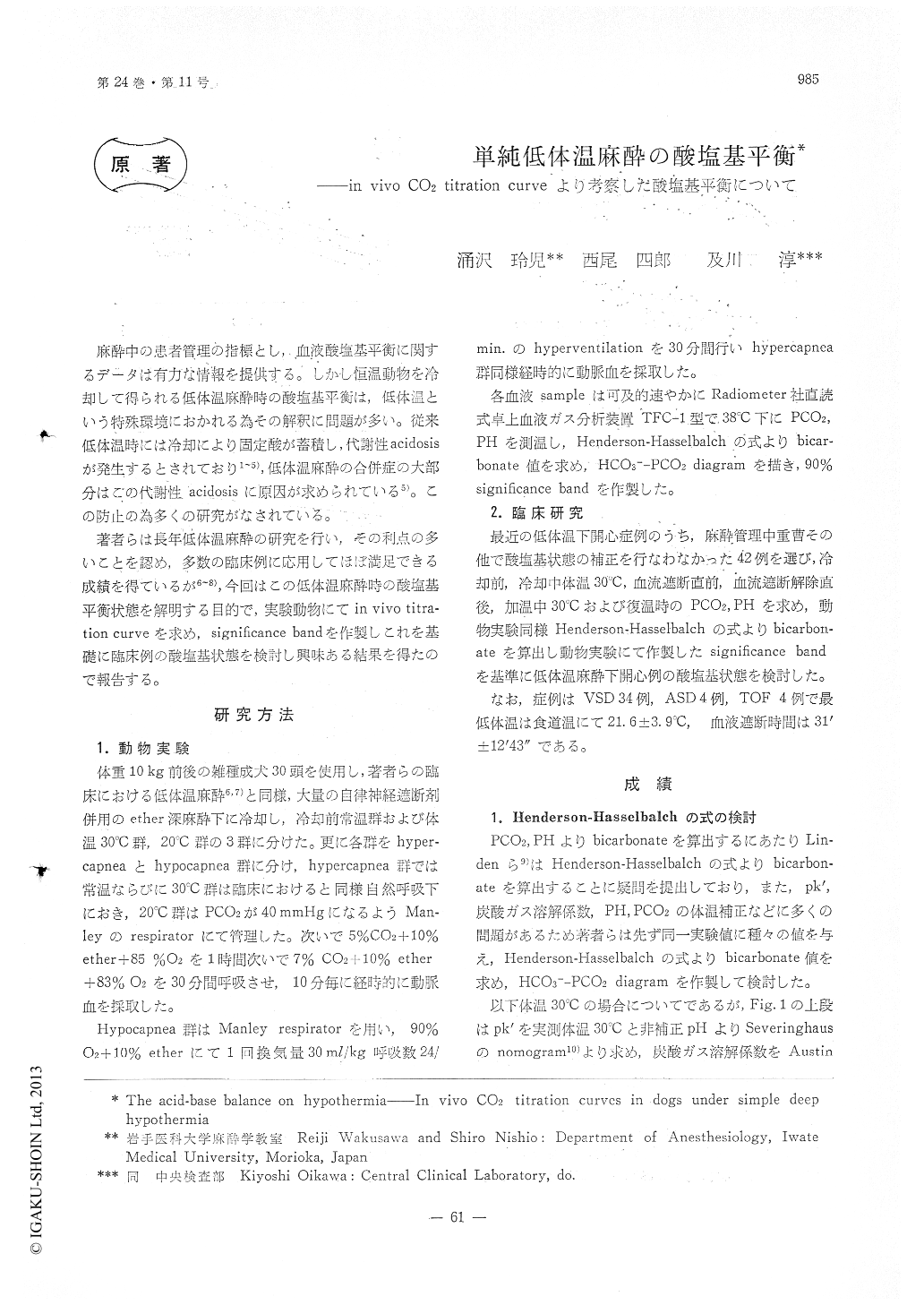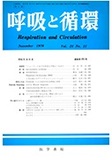Japanese
English
原著
単純低体温麻酔の酸塩基平衡—in vivo CO2 titration curveより考察した酸塩基平衡について
The acid-base balance on hypothermia--In vivo CO2 titration curves in dogs under simple deep hypothermia
涌沢 玲児
1
,
西尾 四郎
1
,
及川 淳
2
Reiji Wakusawa
1
,
Shiro Nishio
1
,
Kiyoshi Oikawa
2
1岩手医科大学麻酔学教室
2岩手医科大学中央検査部
1Department of Anesthesiology, Iwate Medical University
2Central Clinical Laboratory, Iwate Medical University
pp.985-990
発行日 1976年11月15日
Published Date 1976/11/15
DOI https://doi.org/10.11477/mf.1404202980
- 有料閲覧
- Abstract 文献概要
- 1ページ目 Look Inside
麻酔中の患者管理の指標とし,血液酸塩基平衡に関するデータは有力な惰報を提供する。しかし恒温動物を冷却して得られる低体温麻酔時の酸塩基平衡は,低体温という特殊環境におかれる為その解釈に問題が多い。従来低体温時には冷却により固定酸が蓄積し,代謝性acidosisが発生するとされており1〜5),低体温麻酔の合併症の大部分はClの代謝性acidosisに原因が求められている5)。この防止の為多くの研究がなされている。
著者らは長年低体温麻酔の研究を行い,その利点の多いことを認め,多数の臨床例に応用してほぼ満足できる成績を得ているが6〜8),今回はこの低体温麻酔時の酸塩基平衡状態を解明する目的で,実験動物にてinvivotitration curveを求め,significance bandを作製しこれを基礎に臨床例の酸塩基状態を検討し興味ある結果を得たので報告する。
1. In various temperatures at 38, 30℃ and 20℃, the in vivo CO2 titration curves in dogs were determinded under various situations in both acute hyper- and hypocapnea.
2. The angle of inclination of the in vivo CO2 titration curves became acute as the body temperature dropped.

Copyright © 1976, Igaku-Shoin Ltd. All rights reserved.


